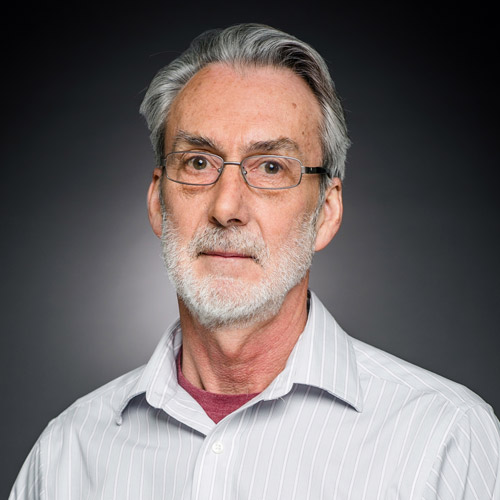Green Light for Biosafety Lab
State proposes approval for low-level research

Photo by Kalman Zabarsky
The Massachusetts Executive Office of Energy and Environmental Affairs has announced a draft decision that would allow researchers to conduct lower-level biosafety research in BU’s National Emerging Infectious Diseases Laboratories (NEIDL) on the Medical Campus in Boston’s South End, where controversy has precluded all such work since the building was finished three years ago. The decision, announced on Friday by Richard K. Sullivan, Jr., Energy and Environmental Affairs secretary, will be published tomorrow in the Environmental Monitor, beginning a 14-day period of public comment.
John Murphy, a School of Medicine professor of medicine and microbiology and interim director of NEIDL, says a final decision would allow scientists to conduct research at Biosafety Level 2 (BSL-2), the same level of research that is currently under way in many labs at BU and at other Boston-area universities and hospitals.
Murphy says the first research scheduled for the state-of-the-art facility would consist of two projects involving nonpathogenic tuberculosis. One study, led by James Galagan, a College of Engineering associate professor of biomedical engineering and a scientist at the Broad Institute, will use computational biology, genomics, and lab work to study the genetic on/off switches of a nonpathogenic relative of the bacterium that causes TB.
“We are trying to gain insight into how the organism that causes TB continues to be such a successful pathogen,” says Galagan. “By studying a safe close relative, we can gain insight into the mechanisms that turn genes on and off in these bacteria. We want to understand that regulatory logic that allows mycobacteria to survive in hostile environments like the human immune system.”
The second project, under the direction of Igor Kramnik, a MED associate professor of medicine and director of MED’s Aerobiology Core, will explore the interaction between the vaccine strain of TB and mammalian hosts. Kramnik hopes to learn more about which factors confer resistance to the bacterium.
“All of the work will be at Biosafety Level 2,” says Murphy. “These investigators are using nonpathogens that do not cause human disease.”
Ronald Corley, Medical Campus associate provost for research and a MED professor, says the emergence in recent years of drug-resistant forms of TB highlights the need to better understand the tuberculosis pathogenesis so that scientists can develop ways to cure the disease and prevent epidemics. “It deserves significant attention,” he says. “It’s one of the three great pathogens on Earth, in terms of the number of people infected and its presence in our own community.” The World Health Organization reports that TB killed 1.7 million people in 2009.
Corley says he hopes researchers will begin moving into the lab early next year. “Moving a laboratory is not an easy thing to do,” he says. “Once we get the go-ahead, the first thing we will do is discuss the logistics with our the Environmental Health and Safety team to make sure the move is conducted appropriately.”
Stephen Burgay, BU senior vice president for external affairs, says the University is pleased “that the state is poised to give us permission to move ahead on Biosafety Level 2 work.”
“We are also pleased that the supplemental risk assessment required for additional research at higher biosafety levels is nearing completion,” says Burgay. “We look forward to going back to the state with that analysis to renew discussions about level three research.” Burgay says the University is committed to sharing with the public the specifics of any type of work conducted at the lab.
But one of NEIDL’s public opponents still has concerns. David Ozonoff, a School of Public Health professor of environmental health and chair emeritus, says he has no problem with research that reduces TB’s human toll. But, Ozonoff says, he would like to see the work at the lab overseen by an independent community advisory board and a scientific advisory board.
Construction on the $200 million NEIDL was completed in September 2008. But controversy and litigation surrounding the study of agents requiring the highest biosafety level, known as Biosafety Level 4 (BSL-4), has kept the building’s 192,000 square feet of laboratory space closed. Approximately 40,000 square feet of the building is designed for research at BSL-2.
Friday’s action by the Executive Office of Energy and Environmental Affairs does not permit research at either Biosafety Level 3 or Biosafety Level 4. Sullivan says permission to conduct BSL-3 research would not be granted until his office reviews an ongoing Supplemental Final Environmental Impact Statement. BSL-4 work could not take place until and unless the regulators and the courts review the supplemental environmental risk assessment.
Biosafety levels are assigned based on primary risk criteria, including infectivity, severity of disease, and the nature of the work being conducted. Each level of containment describes appropriate laboratory practices, safety equipment, and policies for conducting research with a particular agent. The policies are in place to protect researchers, nonlaboratory occupants of the building, the public health, and the environment.

Comments & Discussion
Boston University moderates comments to facilitate an informed, substantive, civil conversation. Abusive, profane, self-promotional, misleading, incoherent or off-topic comments will be rejected. Moderators are staffed during regular business hours (EST) and can only accept comments written in English. Statistics or facts must include a citation or a link to the citation.